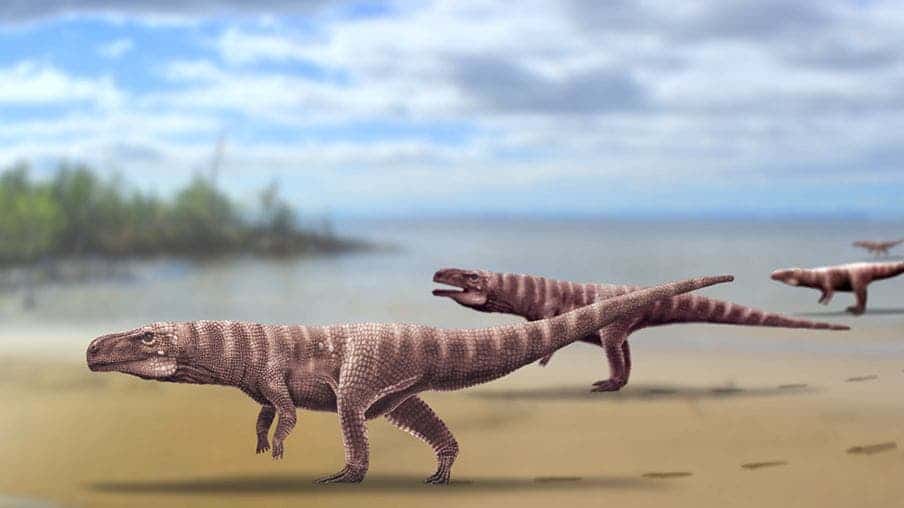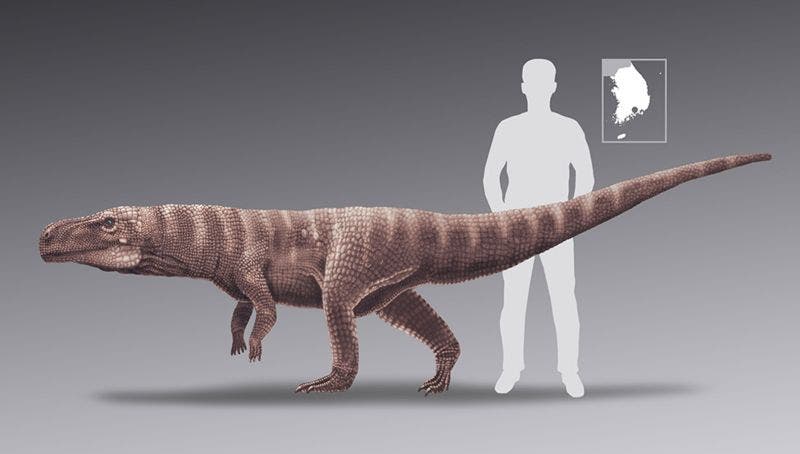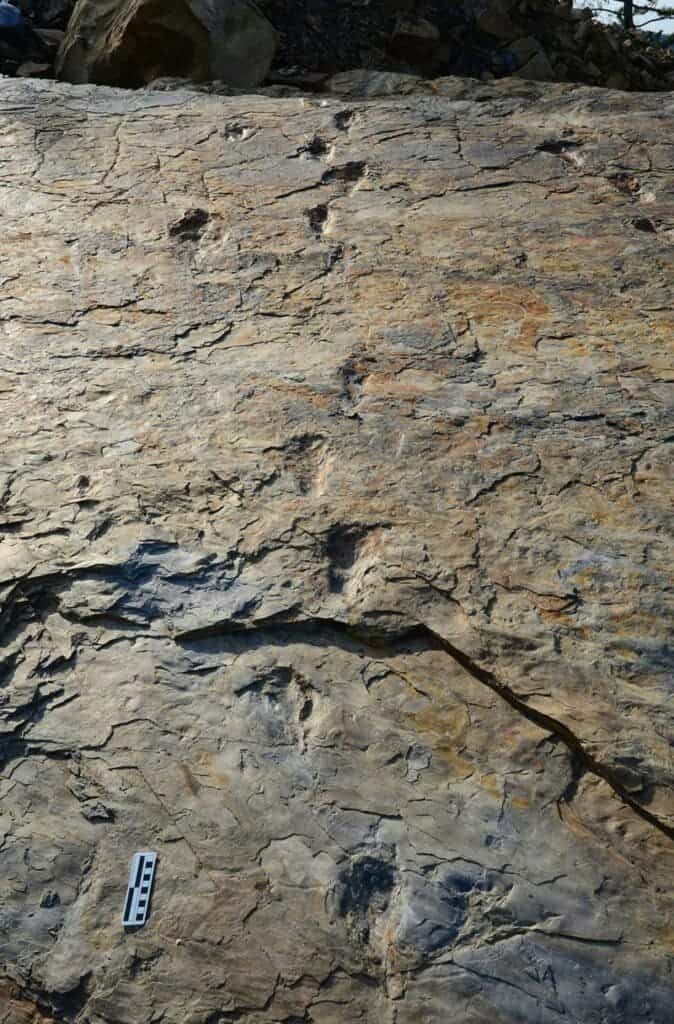
Whether loitering on the banks of the Nile or casually floating through the rivers of Costa Rica, crocodiles aren’t exactly filled with joy and life. In fact, to most people, they look like the incarnation of laziness, despite their fearsome appearance.
But how about you imagine this: a crocodile walking on two legs like an ostrich or T. rex. This cartoonish scenery may have actually been very much real during the Early Cretaceous, about 120 million years ago, according to paleontologists who conducted excavations in South Korea.
Although the international team of researchers don’t have any fossilized bones to support their case, they claim that it is very likely that a bipedal crocodilian left pristinely preserved tracks, found near a lake in South Korea.
Nearly a hundred indentations, each 18 to 24 centimeters long, were preserved in the muddy sediment. They all look very similar in shape to those made by Batrachopus crocodiles that lived tens of millions of years earlier, during the Jurassic period.

While Batrachopus were obviously quadrupeds, the tracks look like they were made by a biped.
“We can see all the digits, all the ridges in the skin – just as if you were looking at your hands,” Martin Lockley, an emeritus professor at the University of Colorado, told BBC News.
“They put one foot in front of another; they could pass a sobriety test walking on a straight line. And there are no front footprints,” Lockley said, adding that depth of impressions made by the heel also supports the idea of an upright gait.
Lockley and colleagues have named the supposed crocodilian Batrachopus grandis, seeing how the shape of the tracks look like they were made by a Batrachopus, albeit a much larger one.
Professor Kyung Soo Kim from South Korea’s Chinju National University of Education also added that the trackways are very narrow and there are no markings left by a dragging tail — something you would surely expect from a crocodile.

Previously, in 2012, Lockley and colleagues studied another fossilized trackway in South Korea. These tracks looked very similar to the ones described in the new study, but at the time the researchers thought they must have been etched by pterosaurs — ancient flying reptiles that ranged in size from the size of a sparrow to the size of an airplane.

At the time, the researchers thought that this was the only explanation — some pterosaurs must have clumsily walked on their two legs before taking flight to the skies. But now, in light of this new evidence, Lockley says that these earlier tracks could have been made by a bipedal Batrachopus.
Well, it’s either that or by some unknown bipedal dinosaur whose limb digits resemble that of a croc. From T. rex to raptors, there’s no shortage of two-legged dinosaurs known to science. And seeing how they have no fossils to speak of, the notion of a two-legged crocodile seems shrouded in skepticism — at least until paleontologists actually find some fossils.
The findings were described in the journal Scientific Reports.









